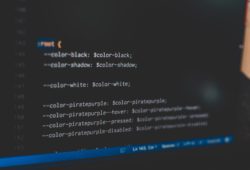Java 8 Functional Interface explained with code samples
Java 8 introduced the concept of functional interfaces. In this blog post, I will be explaining what a Java 8 functional interface is.
Table Of Contents
What is a functional interface?
A functional interface is nothing but an interface that has only one abstract method. It can have more than one static and default methods, but it should have only one abstract method in order to qualify as a functional interface. Consider the following code snippet:
package learnjava.java8;
@FunctionalInterface
public interface MyFunctionalInterface {
public void method1();
public default void defaultMethod(){
System.out.println("Default method");
}
public default void staticMethod(){
System.out.println("Static method");
}
}
Here, we have defined an interface called MyFunctionalInterface. This has only one abstract method called method1 and so this is a functional interface. It also has a default and a static method. Note that we have specified the @FunctionalInterface annotation. This annotation specifies that this is a functional interface. So if we try to add another abstract method to this interface, it will cause a compilation error. So consider the following code snippet:
@FunctionalInterface
public interface MyFunctionalInterface {
public void method1();
public void method2();
}
The above code snippet causes a compilation error since there are 2 abstract methods in the interface.
Note that the @FunctionalInterface annotation is optional. So if we remove this annotation, the compilation error goes away but the interface will no longer be a functional interface. We can still have a functional interface without the @FunctionalInterface annotation. Any interface that has a single abstract method qualifies to be a functional interface irrespective of whether it has the @FunctionalInterface annotation or not.
Why are functional interfaces useful?
Functional interfaces are used to create anonymous functions using lambda expressions. Java 8 introduced lambda expressions as a powerful way to create anonymous functions. So if you have a functional interface, you can use a lambda expression to provide an implementation for the interface without having to write the boiler-plate code.
Suppose, you need to write a class that implements the MyFunctionalInterface declared above. Prior to Java8, you would need to write code similar to the following:
public class MyClass implements MyFunctionalInterface {
@Override
public void method1() {
System.out.println("Method1");
}
public static void main(String args[]){
MyClass obj = new MyClass();
obj.method1();
}
}
When you run this code, it will print the following output:
method1
However, in Java 8, you can re-write the code above as follows:
public class MyClass {
public static void main(String args[]){
MyFunctionalInterface myInterface = () -> {System.out.println("method1");};
myInterface.method1();
}
}
So now, we don’t need the class to implement the interface and provide a method body. Compared to the traditional code this code is compact and eliminates the need to create a class that implements the interface. When this code is executed, it will also print the same output as before:
method1
Existing Functional Interfaces in Java
Java already has some functional interfaces. java.lang.Runnable, java.util.Comparator are all examples of functional interfaces. These interfaces were present before Java 8. However, after Java 8 they were made functional interfaces with the @FunctionalInterface annotation. The advantage of making these functional interfaces is that you do not need to create a new class just to implement them, yo can provide implementations for the abstract method within these interfaces via lambda expressions.
java.util.Function
Java 8 introduced a new package called java.util.Function. It has a number of useful functional interfaces. For example, it provides the Predicate interface. It has a single method called test. This accepts an argument of any type and returns a boolean result. Consider the following sample code:
import java.util.function.Predicate;
public class PredicateDemo {
public static void main(String[] args) {
Predicate<Integer> greaterThan8 = (input) -> input > 8;
System.out.println("4 is greater than 8 = "+greaterThan8.test(4));
System.out.println("12 is greater than 8 = "+greaterThan8.test(12));
}
}
So here, the Predicate.test method checks if the input integer is greater than 8. So when you run the code above, it will print the following output:
4 is greater than 8 = false
12 is greater than 8 = true
Just like Predicate, there are a number of useful interfaces in the java.util.Function. It is not possible to explain all these interfaces here but you can take a look at the API documentation.
Conclusion
So, this article explains what a Java 8 functional interface is. It also explains how you can implement a functional interface via a lambda expression. Finally, it covers some on the in-built functional interfaces.

